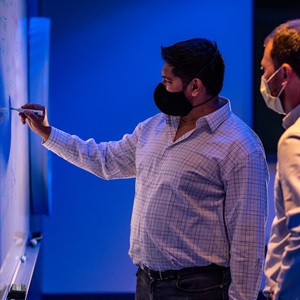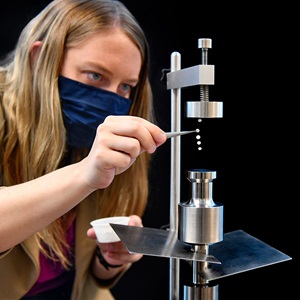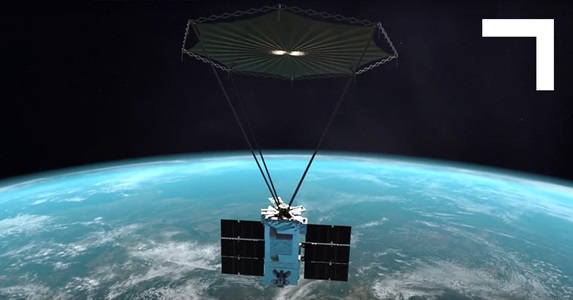Spacecraft Design: The Art and Science of Breaking Barriers

By Doug Bonderud
There are now more than 2,000 active satellites orbiting Earth. While their purpose, payload and price differ significantly, they share a common functional framework: iterative systems engineering. This process — which addresses key components such as spacecraft design, launch parameters and ongoing support — starts when customers first reach out to potential contractors, and is only complete when spacecraft finally reach orbit.

Iterative Systems Engineering Produces Barrier-Breaking Spacecraft Design
What does this look like in practice? How do engineering teams combine the science of spaceflight with the art of design to help customers break barriers — and balance budgets?
"One of the first things we do is to perform a functional decomposition of a satellite mission,” said Erin Shaw, systems engineering lead for Northrop Grumman's Rapid Prototyping Division. “We break it down into functions to perform the mission, maintain the health and safety of the space vehicle, and provide communications, and command and control between the satellite and the ground."
Just as physical components work in concert to deliver spacecraft performance at scale, four factors inform the scope of spacecraft design: cost, schedule, performance and reliability.

Cost circumscribes the boundary of all other factors — increased budgets bolster completion times, enable purchasing high-performance processors, and allow additional service and support solutions. Upfront analysis of these elements allows systems engineers to create top-level requirements and resources, which are then allocated across spacecraft, ground control and launch systems.
Mission classifications are critical to establish testing schedules and timelines. For example, Class A missions are high priority and complexity, and long duration, requiring extremely high performance standards. Stakes this high mean reliability is key to aerospace engineers who "can't afford to use parts that are risky or unproven," according to Mike Ciffone of Northrop Grumman's Strategic Space Division. "On the other hand, if you're doing a Class D mission, which is more of a demonstration, you might be able to use components that are less proven but offer a higher potential payoff for the mission."
The Balancing Act of Integration
With scope and scale established, spacecraft systems engineers can go to work. But Ciffone noted that this process is all about balance of managing cost and complexity while delivering on both form and function. Here, a phased approach helps ensure progress and allows ease of integration across iterative design.
Architectural Assemblies: Before companies issue a request for proposal (RFP), they communicate basic requirements with spacecraft designers, allowing system engineers to lay out each satellite segment’s physical pieces. This phase ensures requested system frameworks are functionally possible. Shaw also noted that it's critical to loop in space vehicle integration and test (I&T) experts during this phase because "you don't want them to walk in, see all the parts on the floor and tell you that your satellite can't be built the way you've designed it."
Systems Studies: This focuses on evaluating different technical approaches to create a risk-and-reward analysis of each solution and determine the best way forward.
Achievable Adjustments: The goal of any satellite design is to remain "power positive" in orbit — this requires listing out all required components, totaling up their mass and power consumption requirements and comparing them to projected power generation capacity.
Change Considerations: To effectively manage change across the scope of complex satellite design, Northrop Grumman uses an Engineering Review Board (ERB) to track proposed modifications. This allows each team to describe how changes may affect both specific mission systems and the spacecraft at scale.
RFP Reviews: In many cases, the time between initial customer inquiry and official RFP is significant. This poses a potential problem, according to Greg Davidson, director of Capture and Proposal Excellence, since "what the customer asked for 10 months or a year ago may not be precisely what they want now that you're on contract." As a result, it's critical to conduct a system requirements review (SRR), preliminary design review (PDR) and critical design review (CDR) to ensure engineering efforts and customer expectations match.

All Systems Go
Systems engineering is an integrative, iterative process that leverages the scope of mission requirements to define component scale. Driven by continual, communicative efforts rather that clearly-defined endpoints, this framework shapes the foundation of forward-thinking spacecraft design, balancing cost and complexity to break new barriers in space exploration.


